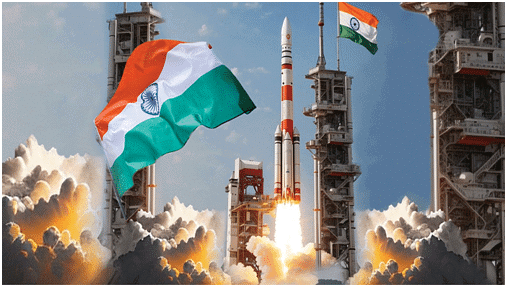Indian Space Programme | General Awareness for SSC CGL PDF Download
| Table of contents |

|
| Introduction |

|
| Department of Space and ISRO |

|
| INSAT System |

|
| GRAMSAT |

|
| HAMSAT |

|
| BHUVAN |

|
| VHRR |

|
| METSAT (Kalpana-I) |

|
Introduction
India's space program has evolved significantly over the decades, driven by pioneering efforts and advancements. The development of space technology in India began in the early 1960s and has since grown into a robust and multifaceted field. This progress is marked by the establishment of various satellite systems and space missions, which have played a crucial role in communication, education, and disaster management. Let’s explore the key components of India’s space endeavors and their impacts.

Department of Space and ISRO
Formation and Early Leadership
- In 1961, the responsibility for space research in India was assigned to the Department of Atomic Energy (DAE), led by Dr. Homi J. Bhabha.
- To manage space research and establish a national space program, the DAE created the Indian National Committee for Space Research (INCOSPAR) in 1962, with Dr. Vikram Sarabhai as Chairman.
Indian Space Research Organisation (ISRO)
- ISRO was established to plan, execute, and oversee space research and application programs in India.
- Headquartered in Bengaluru, ISRO is renowned for its leadership in the Indian space program, with Dr. Vikram Sarabhai often recognized as the father of the space program.
- India’s first satellite communication station was established at Arvi, near Pune.
First Indian Satellite: Aryabhatta
- Launched on April 19, 1975, Aryabhatta was India’s first satellite, sent into space from Baikonur in Kazakhstan (formerly part of the USSR).
INSAT System

The Indian National Satellite System (INSAT) was introduced in 1983 to cater to communication, television broadcasting, and meteorological services. INSAT satellites offer transponders across various frequency bands including C, S, Extended C, and Ku, to meet India's communication needs.
Applications of INSAT Satellites
- Telecommunication: INSAT has significantly contributed to the communication revolution in India by enhancing connectivity across the country.
- Television: The system has been instrumental in the rapid expansion of television services throughout India.
- Educational TV: INSAT supports educational programming on Doordarshan, focusing on improving access to educational content.
- Satellite News Gathering: The system enables real-time news coverage from various locations through its transponders.
- Radio Networking: INSAT facilitates high-quality national and regional radio programs with reliable transmission.
- Mobile Satellite Service: With the launch of INSAT-2C, mobile satellite services were introduced, supporting mobile communications.
- Satellite Navigation: Although still emerging, INSAT’s navigation services are expected to become fully operational in the coming years. International Civil Aviation Organization has mandated satellite navigation for all civilian aircraft.
GRAMSAT
The GRAMSAT project was developed to address the need for rural education and literacy. It aims to bridge the educational gap in rural areas and support all-around development.
Key Features of GRAMSAT
- Communication Networks: Establishes communication links between state capitals, districts, and blocks, extending to rural villages.
- Computer Connectivity: Facilitates computer networking for improved information access.
- TV Broadcasting Facilities: Provides television broadcast services to remote areas.
- Teleconferencing: Supports teleconferencing to enable distant communication.
- Disaster Management: Enhances disaster response and management capabilities.
- Rural Education Broadcasting: Focuses on delivering educational content to rural areas to improve literacy rates.
HAMSAT
HAMSAT is a microsatellite designed to provide satellite-based radio amateur services. Launched by PSLV-C6 in 2006, HAMSAT serves both Indian and international amateur radio operators, fostering global amateur radio communication.
BHUVAN
BHUVAN is a software application that provides a 3D representation of Earth’s surface. It allows users to view detailed 2D and 3D images and access information on various resources such as soil, wasteland, and water.
VHRR
VHRR is a crucial instrument on the INSAT satellites used for weather monitoring. It functions as a telescope with a scanning mirror, capturing images in visible and infrared wavelengths to monitor weather conditions.
METSAT (Kalpana-I)

METSAT, also known as Kalpana-I, carries a VHRR to capture detailed images of the Earth in visible, thermal infrared, and water vapor bands. It also includes a data relay transponder to collect data from remote meteorological platforms, aiding in weather data collection and analysis.
|
448 videos|1497 docs|288 tests
|
FAQs on Indian Space Programme - General Awareness for SSC CGL
| 1. What is the Department of Space and ISRO? |  |
| 2. What is the INSAT System? |  |
| 3. What is the purpose of BHUVAN? |  |
| 4. What is the significance of METSAT (Kalpana-I) in the Indian Space Programme? |  |
| 5. How does GRAMSAT contribute to the Indian Space Programme? |  |















